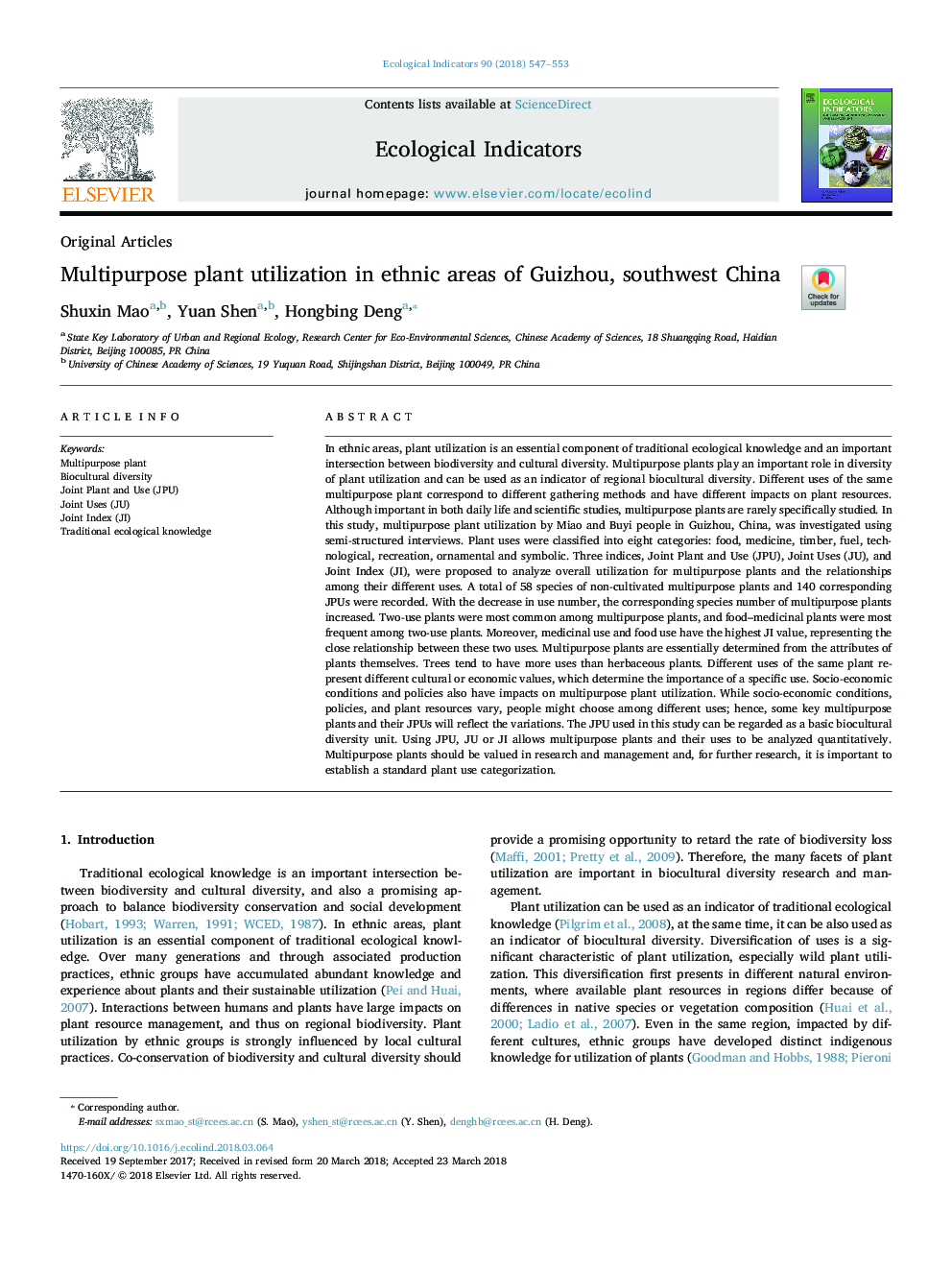| Article ID | Journal | Published Year | Pages | File Type |
|---|---|---|---|---|
| 8845478 | Ecological Indicators | 2018 | 7 Pages |
Abstract
In ethnic areas, plant utilization is an essential component of traditional ecological knowledge and an important intersection between biodiversity and cultural diversity. Multipurpose plants play an important role in diversity of plant utilization and can be used as an indicator of regional biocultural diversity. Different uses of the same multipurpose plant correspond to different gathering methods and have different impacts on plant resources. Although important in both daily life and scientific studies, multipurpose plants are rarely specifically studied. In this study, multipurpose plant utilization by Miao and Buyi people in Guizhou, China, was investigated using semi-structured interviews. Plant uses were classified into eight categories: food, medicine, timber, fuel, technological, recreation, ornamental and symbolic. Three indices, Joint Plant and Use (JPU), Joint Uses (JU), and Joint Index (JI), were proposed to analyze overall utilization for multipurpose plants and the relationships among their different uses. A total of 58 species of non-cultivated multipurpose plants and 140 corresponding JPUs were recorded. With the decrease in use number, the corresponding species number of multipurpose plants increased. Two-use plants were most common among multipurpose plants, and food-medicinal plants were most frequent among two-use plants. Moreover, medicinal use and food use have the highest JI value, representing the close relationship between these two uses. Multipurpose plants are essentially determined from the attributes of plants themselves. Trees tend to have more uses than herbaceous plants. Different uses of the same plant represent different cultural or economic values, which determine the importance of a specific use. Socio-economic conditions and policies also have impacts on multipurpose plant utilization. While socio-economic conditions, policies, and plant resources vary, people might choose among different uses; hence, some key multipurpose plants and their JPUs will reflect the variations. The JPU used in this study can be regarded as a basic biocultural diversity unit. Using JPU, JU or JI allows multipurpose plants and their uses to be analyzed quantitatively. Multipurpose plants should be valued in research and management and, for further research, it is important to establish a standard plant use categorization.
Related Topics
Life Sciences
Agricultural and Biological Sciences
Ecology, Evolution, Behavior and Systematics
Authors
Shuxin Mao, Yuan Shen, Hongbing Deng,
